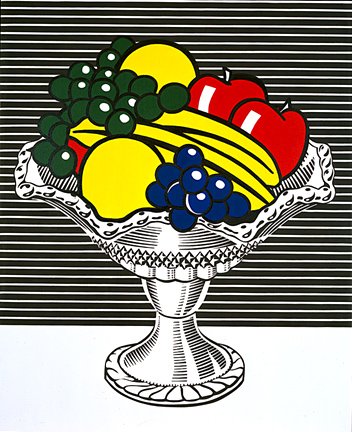“The Pop artists did images that anybody walking down Broadway could recognize in a split second – comics, picnic tables, men’s trousers, celebrities, shower curtains, refrigerators, coke bottles – all the great modern things that the Abstract Expressionists tried so hard not to notice at all.” – Andy Warhol
There have been tremendous changes in the years following World War 2. It was years of experimentation and where a new generation of artists emerged within the 1950’s. These artists began to look for inspiration from materials within their environment. They incorporated everyday items, consumer goods, mass media messaging and imagery. In reference to its intended popular appeal and its engagement with popular culture, it was called Pop Art.
Popular “Pop” Art is one of the most recognizable styles of modern art that began in Brittain in the mid 1950’s. Pop Art is a movement that was started by the American artists, Andy Warhol, Roy Lichtenstein,JamesRosenquist and Claes Oldenburg. In Pop Art, artists tend to focus more on common household objects, consumer products as well as people of our everyday lives, rather than focusing on themes such as mythology or morality.
One influential characteristics of this art movement is that it blurs the line between high culture and low culture, and that art can borrow from any source. By doing so, they create artworks such as sculptures and paintings of mass culture objects and media stars.
In Pop Art, the artists were straightforward within their works. They tend to use mostly very bright colors, more specifically, bold swaths of primary colors that often came straight from the paint containers, coupled by flat imagery influenced by comic books and newspaper drawings, as well as images of celebrities such as Marilyn Monroe. Often, the art works were created using commercial or mechanical techniques like silk-screening. Screen printing is a printing technique whereby a mesh is used to transfer ink onto a substrate, except in areas made impermeable to the ink by a blocking stencil.

Popular art was of a great contrast, in comparison to abstract expressionism, which focused mainly on feelings and emotions. For example, popular art in the US used hard edges, clear forms, and recognizable subject matter, while abstract expressionism was more loose and abstract. Additionally, as mentioned above, Pop Art tends to focus more on everyday objects that Abstract Expressionism would overlook. New York was the main hub for American Pop Art.

Artist: Pollock
Examples of Pop Art:


Oil on canvas

Sources:
https://www.theartstory.org/movement/pop-art/
https://www.moma.org/learn/moma_learning/themes/pop-art/
http://hans.presto.tripod.com/blam.html
